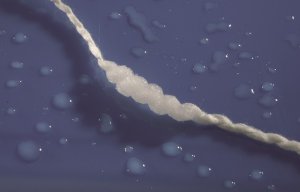
SAF innovations on display at ANEX
The company will be displaying both its fibre and fabric technologies at the INDA’s organised event in Baltimore.

11th August 2014
Innovation in Textiles
|
Grimsby
The event organised by INDA, the Association of the Nonwoven Fabrics Industry,has been the largest pure filtration event in the Americas for over 20 years, and a great annual opportunity to meet customers, suppliers and manufacturers in one place at one time.
“It is no doubt that INDA’s filtration event has always been a successful, and this has prompted TAL to exhibit this year. It will provide the perfect platform to demonstrate the capabilities of our technology within this sector and meet with many large filtration companies under the one roof,” said TAL Technical Sales Manager Dave Hill.
TAL will join over 150 exhibitors as it demonstrates how its Filtratas product range can be used to effectively remove water from aviation fuel, automotive fuel and hydraulic oil.
The company will be displaying both its fibre and fabric technologies, while also having its development specialist’s on-hand to provide expertise and advice if required.
A significant reason for the majority of oil and fuel system failures is the presence of high water levels in dissolved, dispersed and free water, according to the company.
SAFTM based filter media fabrics is designed to remove both dispersed and free water to very low ppm levels at industry leading rates. This is said to result in reduced fuel and oil degradation and provide the required filter quality for efficient machine operation.
“SAFTM is a key component for a wide range of enhanced nonwoven filter media fabrics that are designed for the removal of water and particulates from aviation fuel, automotive diesel and a wide range of oils,” explained Dave Hill. “Such fabrics help reduce problems associated with water contamination in such situations. Its versatility gives rise to cost savings over traditional cellulosic-based absorption media, while offering full compliance potential to stringent international filtration standards.”

Business intelligence for the fibre, textiles and apparel industries: technologies, innovations, markets, investments, trade policy, sourcing, strategy...
Find out more